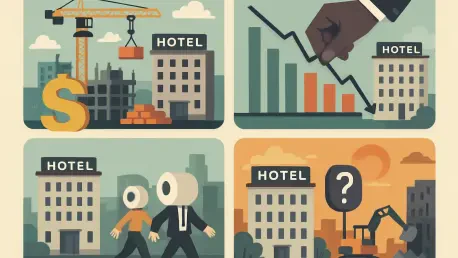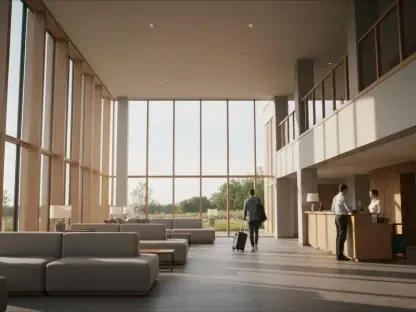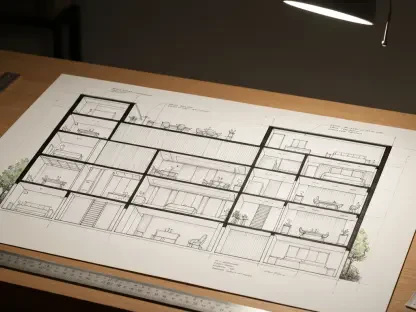Short introductionWe’re thrilled to sit down with Katarina Railko, a seasoned expert in the hospitality industry with a wealth of experience in travel, tourism, entertainment, and events. With her deep insights into the evolving landscape of hotel development, Katarina has become a trusted voice at expos and conferences worldwide. Today, we’re diving into the current state of the hotel industry, exploring the challenges faced in 2025, the opportunities on the horizon, and what developers can do to position themselves for success in a rapidly changing market.
What have been the most significant hurdles for hotel development in the first eight months of 2025?
It’s been a tough start to the year for sure. The industry has been hit with a triple threat of tariffs, high interest rates, and geopolitical tensions. Tariffs, in particular, have disrupted supply chains and increased costs for developers, while interest rates have delayed financing for many projects. On top of that, geopolitical uncertainty has made investors cautious, slowing down commitments to new builds or expansions. It’s been a far cry from the momentum many expected at the beginning of the year, and developers have had to navigate a lot of unpredictability.
How have tariffs specifically affected the hotel industry this year?
Tariffs have really thrown a wrench into the works. They’ve driven up the cost of construction materials and imported goods, which are critical for hotel builds and renovations. This has forced developers to either absorb higher costs or pass them on, which isn’t always feasible in a competitive market. Plus, the uncertainty around trade policies has delayed projects as companies wait to see how things shake out. It’s created a ripple effect, impacting budgets and timelines across the board.
What impact have interest rates had on hotel development plans in 2025?
Interest rates have been a major roadblock. Many developers were banking on rate reductions earlier in the year to make financing more affordable, but those cuts didn’t come as soon as expected. Higher borrowing costs have stalled projects, especially for smaller players who don’t have deep pockets. Even larger companies have had to rethink their timelines, prioritizing only the most promising developments while putting others on hold. It’s slowed the overall pace of growth in the industry.
How have geopolitical tensions influenced hotel projects or investor confidence?
Geopolitical tensions have created a climate of uncertainty that’s hard to ignore. When there’s instability—whether it’s related to trade disputes or political shifts—investors get nervous. They’re less likely to commit to long-term projects like hotels, which require significant upfront capital and time to see returns. We’ve seen some projects delayed or scaled back as a result, especially in regions directly affected by these tensions. It’s also impacted international travel demand, which further complicates the revenue outlook for new developments.
Despite these challenges, there seems to be a sense of optimism for the future. What’s fueling that positive outlook for hotel development?
Absolutely, there’s light at the end of the tunnel. Industry leaders are looking at several encouraging factors. For one, there’s a belief in the resilience of the hotel sector—we’ve weathered storms before and come out stronger. There’s also excitement about emerging markets and segments that show strong demand, like international expansion and upscale properties. Plus, anticipated interest rate cuts, even if modest, are expected to spur deal activity in the coming year. It’s about focusing on strategic opportunities while the market recalibrates.
Why is expanding into international markets like Canada considered a significant opportunity right now?
Canada is a standout market at the moment. With international tourism to the U.S. softening, Canadians are traveling more domestically, which has led to double-digit revenue per available room increases across provinces. The market is also undersupplied, meaning there’s room for new hotels to capture that demand without oversaturating the space. For developers, it’s a chance to enter at a time when the conditions are ripe for growth, especially with less competition compared to more mature markets.
What makes this a particularly good time to acquire hotels, and who stands to gain the most?
Right now, the economic climate has created a buyer’s market for hotels. Property values are lower due to the slowdown in transactions and the challenges of 2025, so savvy investors or developers with capital can snap up assets at a discount. Those who acquire now are likely to see significant gains when the market rebounds, especially if they can renovate or reposition these properties. Larger companies or private equity firms with liquidity are often in the best position to capitalize on this, but smaller players with a clear strategy can also benefit.
How could investments in AI data centers create long-term growth for nearby hotel markets?
AI data centers are an intriguing catalyst for hotel growth, though it’s a bit of a long game. These facilities take years to build, and while they don’t directly generate overnight stays, they transform the surrounding areas by attracting businesses, workers, and infrastructure development. Over time, this creates sustained demand for accommodations—think business travelers, contractors, and even tech conferences. Hotels near these hubs could see a steady stream of guests as the local economy evolves, making it a smart bet for developers looking at future-proof locations.
Why are upscale and extended-stay segments seen as strong areas for growth currently?
Upscale and extended-stay hotels are shining right now because they cater to specific, resilient demand. Upscale properties appeal to travelers willing to spend more for premium experiences, even in uncertain times, while extended-stay options attract guests like relocating families or remote workers who need longer accommodations. Both segments have shown consistent performance, even amidst broader travel slowdowns, making them a safer investment for developers looking to diversify or enter growing niches.
There’s been talk about this being a great time to build new hotels. Can you explain the reasoning behind that strategy?
Building now is a strategic move if you’ve got the resources. It typically takes about two years to get a hotel from groundbreaking to opening, and by then, many industry leaders expect the market to be on an upswing with lower interest rates and stronger demand. Opening as the newest property in a recovering market gives you a competitive edge—you can command higher rates and attract guests looking for fresh, modern experiences. It’s about timing the cycle to maximize returns when conditions improve.
With potential interest rate cuts on the horizon, how do you see this impacting the hotel industry moving forward?
Interest rate cuts, even if they’re not as dramatic as some might hope, will be a game-changer. Lower rates reduce borrowing costs, making it easier for developers to finance new projects or refinance existing debt. This can jumpstart deal activity, as we often see a domino effect—once a few transactions happen, others follow due to fear of missing out. It won’t solve every problem overnight, but it’s a critical step toward rebuilding momentum in the industry heading into next year.
What is your forecast for the future of hotel development over the next couple of years?
I’m cautiously optimistic about the next couple of years. We’re likely to see moderate growth in supply as developers regain confidence with improving economic conditions and rate cuts. International markets and niche segments like upscale and extended-stay will probably lead the charge, while technology-driven markets near data centers could emerge as dark horses. The key will be adaptability—developers who can pivot to meet evolving traveler needs and capitalize on undervalued opportunities will come out ahead. It’s an exciting time to watch how the industry reshapes itself.









